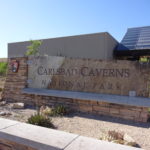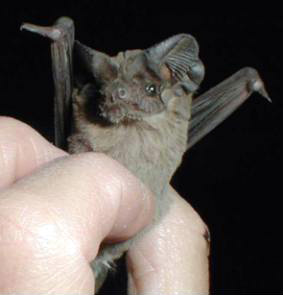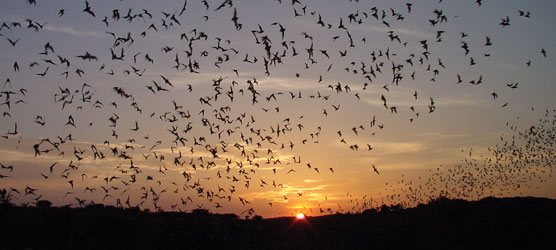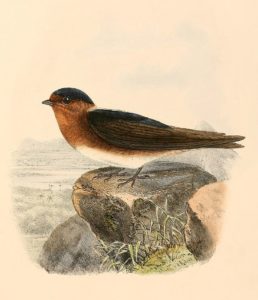 Carlsbad Caverns National Park is a 46,000 acre expanse of land in the Guadalupe Mountains of southeast New Mexico. It’s a fabulous area to see the desert southwest, but the main attraction is underground in the extensive caverns. Oh, and the bats.
Carlsbad Caverns National Park is a 46,000 acre expanse of land in the Guadalupe Mountains of southeast New Mexico. It’s a fabulous area to see the desert southwest, but the main attraction is underground in the extensive caverns. Oh, and the bats.
Everywhere you go in the region, which isn’t much of anywhere outside of Whites City, you hear about the bats. Whites City, by the way, has a population of 7 according to the last census. It consists of a couple of teeny motels, a gas station (last one for 130 miles!), one restaurant, and a combo building housing the Post Office, a grocery, a gift shop, and public bathrooms. A rock thrown in any direction from the middle of Whites City would land outside the city limits. The city exists solely as a stopover for people visiting the caverns.

And the bats. Mexican free-tailed bats (or, for some reason, often called Brazilian free-tailed bats, Tadarida brasiliensis) are the highlight of the twilight. Each night, as everyone reminds you, they fly out at dusk in large masses from the underground caves. Most spend the day in the appropriately named “bat cave,” 200 feet below the surface. In the evening the tourists (okay, including me) gather in a rock amphitheater to listen to a park ranger explain the bats (and the birds, more on those in a moment). As soon as the bats start spiraling out of the cave, an eerie silence creeps over the crowd to avoid disrupting their departure. You can hear the rustle of leathery wings as thousands of flying insectivores race for the nearby Black and Pecos Rivers for a drink before roaming most of the night eating half their weight in moths.

Watching the bats exit the cave is fascinating, as was the recent scientific finding that the bats can emit ultrasonic vocalizations that “jam” the echolocation calls of rival bat species. This jamming disrupts the other bat’s signal, increasing the chance it will miss its prey, thus giving the Mexican free-tailed bat a competitive edge in grabbing the moth for itself. Given the estimated 400,000 bats that live in the cave, one has to wonder just how many moths must be out there to survive the nightly feeding frenzy.

And now the birds. While the bats were hidden in the darkened bat cave, the Cave Swallows (Petrochelidon fulva) were easy to spot as they flit in and out of the natural cave entrance all day long and into the evening. The swallows also eat insects, but forage during the day and eat a wider variety than do the moth-loving bats so competition between the two species is limited. Nesting in the ubiquitous crevices and creases in the upper cave, the swallows are fascinating to watch.
As you can hear in the video, the adults emit five main vocalizations that include a song, a “che” note, and three types of chattering. They do this all day at the cave entrance, but then an interesting thing happens. Just before the bats begin their nightly spiral out of the cave, the swallows sneak into their nests. The volume of bats can be so great that any bird who hasn’t made it back into the cave in time will be trapped outside for up to three hours or so while the bats make the airspace too congested to make the attempt.
Watching these two species in their night and day dance is fascinating. Of course, the bats and the birds are merely one aspect of Carlsbad Caverns, and one that most people likely don’t fully appreciate. After all, the caverns themselves are striking. I’ll have more on the caves shortly.
[Attributions: Photos of bats and bird from Wiki commons (photography not allowed during bat flight). Photo of Carlsbad sign and video are David J. Kent]
Check out my Goodreads author page. While you’re at it, “Like” my Facebook author page for more updates!
David J. Kent is the author of Lincoln: The Man Who Saved America, scheduled for release July 31, 2017. His previous books include Tesla: The Wizard of Electricity and Edison: The Inventor of the Modern World (both Fall River Press). He has also written two e-books: Nikola Tesla: Renewable Energy Ahead of Its Time and Abraham Lincoln and Nikola Tesla: Connected by Fate.
Follow me by subscribing by email on the home page. Share with your friends using the buttons below.










